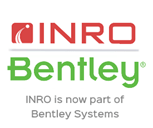The rise of orbital rail transit schemes and their success factors
Ruw Palapathwala & Thanura Rabel
Aurecon, Victoria
This presentation was delivered at the 2021 Online Conference Series and until October 2022 is only available to registered delegates and Content Access Pass holders via Interchange. For information on accessing this and other presentations please review the Content Access Pass options.
ABSTRACT
Up until 1995, there were only eight passenger orbital rail lines constructed around the world. Since then, a further 11 have opened, three are currently under construction and two are being planned. This trend is likely to continue as urbanisation rates increase, cities become polycentric and network coverage is widened to induce mode shift and improve transit accessibility. In terms of patronage and service frequency, orbital rail lines often attract a diverse demographic and constitute the busiest services along their respective train networks. Generally they also form strategic passenger rail links between commercial hubs, education institutes, places of interest and dense residential precincts due to their unique corridor alignment.
However in literature, orbital rail networks are largely not very well understood in terms of their function, integration with the wider transport network, land-use development influence, and role in fulfilling a city's transport policies and objectives.
This study consequently reviewed orbital rail schemes across the globe with a view to further understand their success factors. Primarily, there were three objectives of the study and this presentation seeks to provide a well-rounded summary of them, namely:
- Document key transport planning, land-use and operational insights from international orbital rail schemes and identify the critical success factors to these projects
- Develop a set of performance metrics and benchmark international orbital rail schemes against these factors
- Using the above, outline key learnings and implications going forward for future development of such schemes
It is intended that the key outcomes emerging from this study will go on to assist transport practitioners, government agencies and academia involved in the planning of future orbital rail schemes in Australia and around the world. It is for this reason we believe this topic will be of significant interest to a national audience.
Author(s)
Ruw Palapathwala | Aurecon
Ruw Palapathwala is a transport planner at Aurecon where he is currently engaged in the network development team for the Suburban Rail Loop project as part of the Aurecon-Jacobs-Mott MacDonald joint venture. He’s also the Vice-President of the Young Institute of Transportation Engineers committee where he is involved in planning the committee’s activities, encouraging young transport professionals to engage in professional development and liaising with stakeholders to build the profile of the committee and institute. Ruw is motivated to create a better world, believing in its capacity to create better people and is driven by taming the wicked problem of traffic congestion, yielding his passion for transport. He’s worked in the industry for 3 years and has experience in data analytics, GIS, passenger demand modelling, transport impact assessments and intersection network modelling. He holds a Bachelor of Engineering (Civil) and Bachelor of Business (Finance) dual major from Swinburne University of Technology.
Thanura Rabel | Aurecon
Thanura Rabel is the Technical Leader for Transport Planning (Asia Pacific) at Jacobs and is a chartered engineer with over 13 years’ experience. Currently he is responsible for leading the transport planning and modelling team for Suburban Rail Loop within the Aurecon-Jacobs-Mott MacDonald joint venture. Previously he has worked on numerous transport infrastructure business cases as a technical consultant advising on transport planning, modelling and traffic engineering matters. Thanura has a masters in ‘Engineering for Sustainable Development’ from the University of Cambridge, U.K. and is passionate about sustainable transport outcomes.







